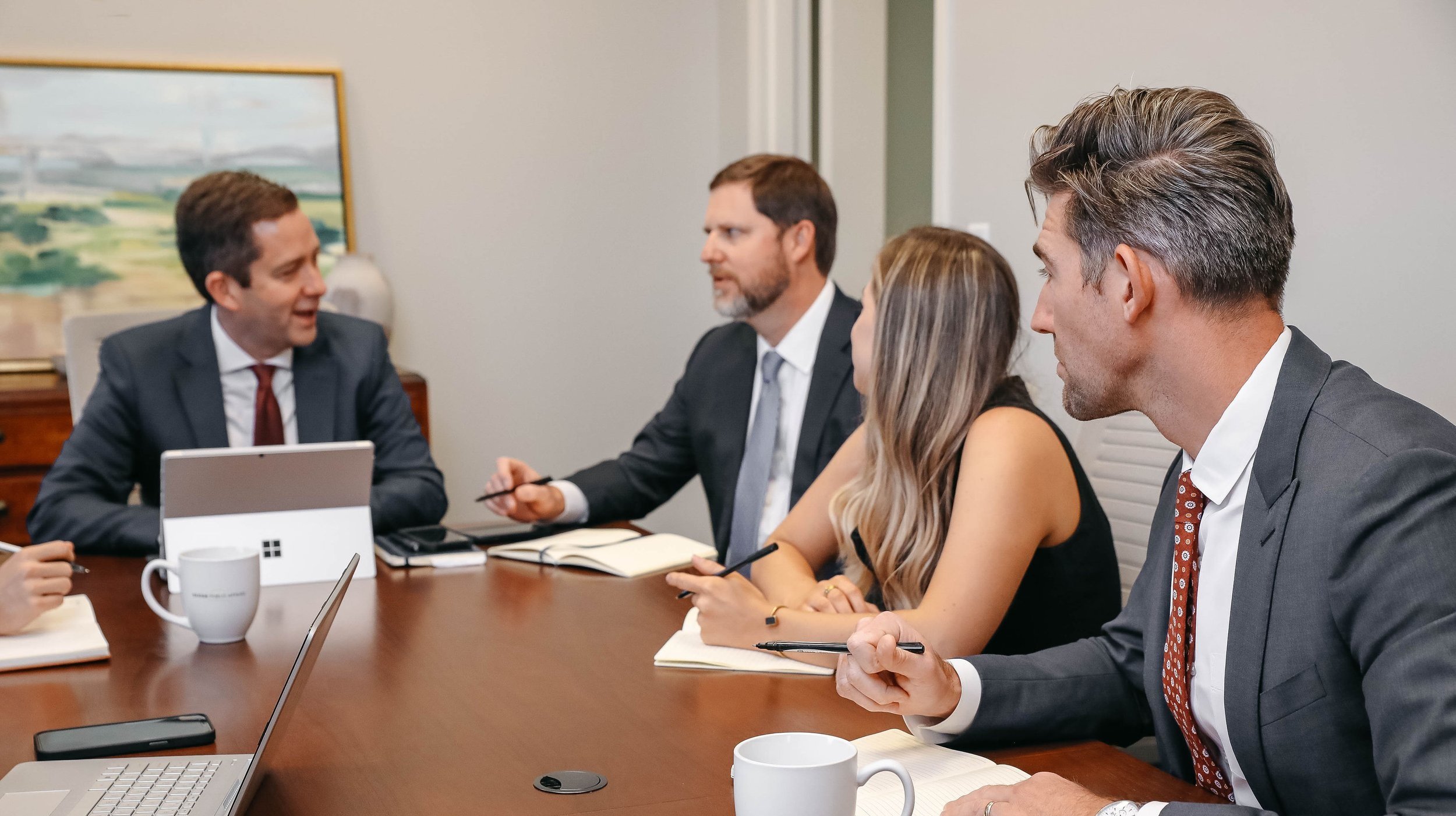Two days after surviving an assassination attempt and on the first day of the Republican National Convention in Milwaukee, WI, former President Donald J. Trump announced that Senator J.D. Vance of Ohio would serve as his Vice President if elected in November.
Below is a forecast of the major policy changes we would expect to see in a Trump-Vance Administration.
Taxes
In 2017, Trump signed the Tax Cuts and Jobs Act (TCJA), the most significant federal tax policy overhaul in a generation that reduced tax rates for nearly every American taxpayer and business. The Act is set to expire at the end of 2025, meaning that without Congress and the President acting, taxes will increase. Instead of promising to extend the Act, Trump has promised to pass legislation that would reduce taxes even further than he did in 2017. The nonpartisan Congressional Budget Office has projected that the TCJA would add $4.6 trillion to the national debt over 10 years while Trump and his aides argue the tax cuts increase GDP and ultimately pay for themselves.
Immigration
As one of the defining issues for President Trump, reducing illegal immigration would once again be a major area of focus. The former president has promised massive and unprecedented actions, including sweeping raids, mass deportations, expansions of immigration detention camps, and finishing a wall to prevent illegal migration through the southern border. Trump has called for the death penalty for human traffickers, many of whom are active along America’s porous border with Mexico. He has also promised to take executive action to prevent automatic citizenship for children born in the U.S. to parents who are in the country illegally.
Trade and Tariffs
Trump has promised to use Section 301 of the Trade Act of 1974 to impose trade tariffs on foreign countries, namely China and possibly the European Union, that he believes take advantage of America’s relatively open market. The former president would work with Congress to pass the Trump Reciprocal Trade Act to make American tariffs equal to other country’s tariffs on American-made goods. Trump has also proposed a baseline tariff of around 10% on all foreign-made products and a 60% tariff on all Chinese imports. While higher tariffs would likely increase prices for American consumers, higher tariffs may encourage domestic manufacturing, thus providing more jobs for American workers.
National Defense
If Biden views foreign policy through the prism of multilateral institutions like NATO and the “rules-based international order” primarily led by Western democracies, Trump sees the world in terms of personal relationships where deals are negotiated bilaterally based on pragmatism. Trump would likely increase pressure on China to reduce its aggressive activities in the Pacific and in cyberspace, Mexico to reduce illegal border crossings, and NATO allies to increase their defense spending to 2% of GDP.
War in Ukraine
Trump promised during his June debate with Biden that if elected, he would negotiate the end of the Ukraine war before his inauguration. There has been speculation that Trump would get Russia to negotiate by threatening to give Ukraine long-range weaponry to strike deep into Russia; he would get Ukraine to negotiate by threatening to withhold aid to Ukraine. The former president does not view the war in Ukraine as a conflict between democracy vs. authoritarianism as Biden does, which could lead him to support a negotiated peace agreement where Russia remains in possession of lands it has annexed.
Renewable Energy and Energy Infrastructure
Former President Trump has vowed to reverse the environmental rules and climate standards the Biden Administration has implemented over the past three years, claiming they are unconstitutional, unnecessary, and/or overburdensome on businesses. Trump has promised to increase federal drilling permits and leases to allow more oil and natural gas production. Because of Trump’s focus on “re-shoring” manufacturing in America away from China, the former president may keep subsidies for domestic manufacturing put in place by Biden, including for “green” energy components like solar panels and advanced batteries. One area where Trump may build upon Biden’s action is in investments in nuclear energy, including nuclear fusion technology.
Who We’re Watching
J.D. Vance: The 39-year-old junior Senator from Ohio would serve as Vice President and Trump’s de-facto chief domestic advisor. The author of the best-selling memoir Hillbilly Elegy is known for his deep and personal connection to the “forgotten man” of white, working-class America.
Robert O'Brien: Trump’s former White House National Security Adviser remains a leading voice for the former president on all things national security and trade. An outspoken China hawk, O’Brien would likely continue to advocate for a forceful decoupling of the American economy from China.
Robert Lighthizer: The former U.S. Trade Representative was Trump’s principal negotiator during the “trade wars” with China in 2018-2020. Lighthizer, along with Peter Navarro (another former Trump White House advisor), would likely return to senior positions within a second Trump Administration.
Dan Scavino: As one of Trump’s longest serving and most trusted aides, Scavino has a large but informal influence on the former president on everything from speechwriting and social media content to staffing choices and messaging.
John McEntee: Trump’s former personal aide and director of presidential personnel will play a key role in a new administration that promises to “purge” and “remake” the federal bureaucracy of civil servants. McEntee would likely lead vetting processes and act as a gatekeeper for prospective administration officials.
Stephen Miller: The architect of Trump’s immigration policies during his first term would likely continue to play a large role in a second term. Miller has promised that if Trump were to be elected, he would use executive action to “implement the most spectacular migration crackdown.” The president’s former senior immigration advisor would likely reprise his role as the face of Trump’s hardline stance on illegal immigration.
Donald Trump, Jr.: The former president’s eldest son could replace Jared Kushner and Ivanka Trump as leading voices within the family should Trump be elected. Jared and Ivanka have said they would not join their father and father-in-law in a future administration, choosing instead to focus on their young family and business in Miami, FL.
Bill Hagerty: The former Ambassador to Japan and current junior Senator from Tennessee is very close to the former President. Hagerty has been discussed as a possible Secretary of State, Secretary of Treasury, or U.S. Trade Ambassador during a second Trump term.
###


